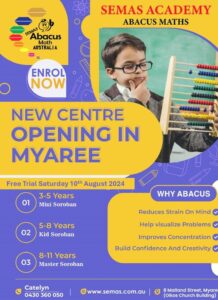Learn More What is Abacus
The invention of Abacus happened thousands of years ago to perform arithmetic calculations, and today it is widely used in various brain development programs. An abacus does not perform calculations by itself; instead, it helps users calculate by remembering what they have counted.

Although today we use calculators and computers instead of abacuses, abacuses remain in everyday use in some countries. Merchants, traders, and clerks in some parts of Eastern Europe, Russia, China, and Africa use abacuses, and they are still used to teach arithmetic to children. Some people who cannot use a calculator because of visual impairment still use an abacus.
People use abacuses in pre-schools and elementary schools around the world as an aid in teaching the numeral system and arithmetic. One can improve one’s mental calculation and become faster and more accurate in doing numerous calculations by learning how to calculate with an abacus. People doing long-term training show higher numerical memory capacity and have more effectively connected neural pathways.
Have a question for us



